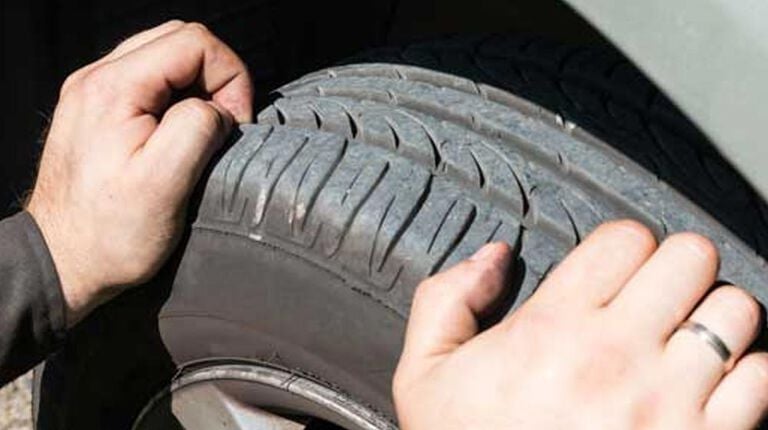Are your summer tires worn out? How to check tread depth

Your summer tires take you everywhere—to the lake, to weddings, to grandma’s house. Since you put so many miles on your summer or 3-season tires, it’s important to perform regular inspections so you can catch signs of damage or wear-and-tear before you hit the highway.
If you see cracks, bulges or abrasions, your tires should be replaced. Otherwise, you’ll want to replace your tires once they reach a certain tread depth.
According to most manufacturers, and even the law in most provinces, your tires should be replaced when the tread depth reaches 4/32” in the winter and 2/32″ in the summer. If your tread depth wears to those levels, your tires are considered bald and a safety hazard.
How to check your tread depth
With a tire tread depth gauge
Tire tread depth gauges are a fast and easy way for you to know for sure if your tires are safe or if they need to be replaced.
1. Find the shallowest groove of the tread and insert the pin of the gauge until the base is flush with the tire.
2. Read the scale. Here’s what you might see, and what you should do:
Tread depth - What to do
6/32” - Your tire’s tread depth is sufficient.
5/32” - If wet roads are a concern, consider replacing your tires.
4/32” – 3/32” - Seriously consider replacing your tires as soon as possible.
2/32” - Your tires are legally bald and need to be replaced.
Tire tread depth gauges are available at most gas stations. Keep one in your glove compartment for easy access.
Don’t have a tire tread depth gauge? You can check your tire’s wear the Canadian way, with a quarter.
With a quarter
Insert a quarter into a tire tread groove with the caribou nose down and facing you. If the tire tread covers the tip of the nose, it’s probably adequate. If you can see the tip of the nose, it’s time to bring your vehicle in.
With tire tread wear indicators
Your tires may also have built-in tread wear indicators. They’re little raised bars—usually six on each tire—along your tires grooves that mark the minimum permitted tread depth. If these indicators are worn, replace your tires right away.
Why you want summer tires with a good tread depth
Tires at or above the recommended tread depth level can give you better traction, reduced risk of punctures and the ability to dispel moisture so you won’t hydroplane on wet roads.
When summer tires reach the end of their life
If it’s time for your tires to retire, bring them to any Kal Tire store and we’ll take care of recycling tires for you. You are welcome to drop off up to four off-rim tires so they can be recycled into products such as rubber mats and playground surfaces.





